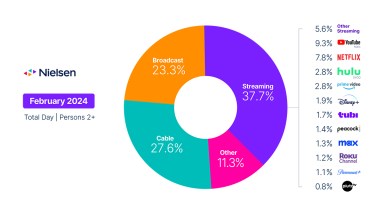
In today’s world, crafting a data-driven marketing strategy is critical for any organization. To that end, most marketers turn to data management platforms (DMPs) to help them deliver and execute their respective strategies. According to the Nielsen CMO report, 63% of marketers in the U.S. consider DMPs one of the top three most important marketing and measurement technologies.
Given this demand, it’s not surprising that the DMP marketplace is crowded with hundreds of vendors claiming that they have the bells and whistles marketers need to succeed in the data-driven world we now operate in. But with so many vendors fighting to stand out, it’s no surprise that many marketers aren’t able to truly differentiate the competing solutions. And to be fair, from an eagle’s eye view, I don’t know that there is a way to.
If you look closer at the details, however, you’ll find that not all DMPs are created equal. Underlying fundamental differences still separate DMPs from one another, and when marketers know what questions to ask, they can break through the buzz words and marketing lingo to identify which DMP is truly the right fit for their needs. There are many use cases and features that can differentiate DMPs, especially across different verticals and industries, but there are a handful of core functionalities that all DMPs must have, and marketers should evaluate them closely as they go through their buying decisions.
How fast can the DMP organize my data and make it actionable?
In order to be considered a DMP, a platform needs to be able to ingest and centralize first-party data. The question that marketers must ask themselves, however, is “Can my DMP perform at the speed of my customer?” Allow me to elaborate; most DMPs will ingest customer data in real-time; however, not all DMPs process the data at the same speed (i.e., as soon as they receive it).
Even though a DMP has ingested a data signal, it still needs to attribute the signal to the right user and its associated segment(s) for proper activation. Some DMPs are capable of processing data in real time, yet some only process data on an hourly or daily basis. To marketers, such as those in e-commerce, processing time can be the difference between converting a prospect and not converting. For example, let’s say a consumer visits an e-commerce site and shops for a particular product. If the user doesn’t convert, the e-commerce site should be able to re-target this person with a promotional ad. If the person continues browsing the web for competitive products within the same hour, day, etc., and the e-commerce’s DMP can’t react quickly, then the company loses a prime opportunity to remain top of mind and convert the user.
The speed at which a DMP can identify and reach the right people is also crucial. It can mean the difference between maximizing or wasting your ad dollars. In the auto market in particular, suppressing ads during a campaign to consumers after they’ve made a purchase is essential to minimizing ad waste. Once a prospective customer has purchased a vehicle, any additional ad exposure would be considered a waste. For this reason, it’s vital that a DMP can analyze new data signals and execute on them as they come in. The longer it takes a DMP to identify and communicate that a particular buyer should be excluded from a certain media campaign, the more likely it is that you’ll be throwing money out the window and delivering irrelevant ads.



